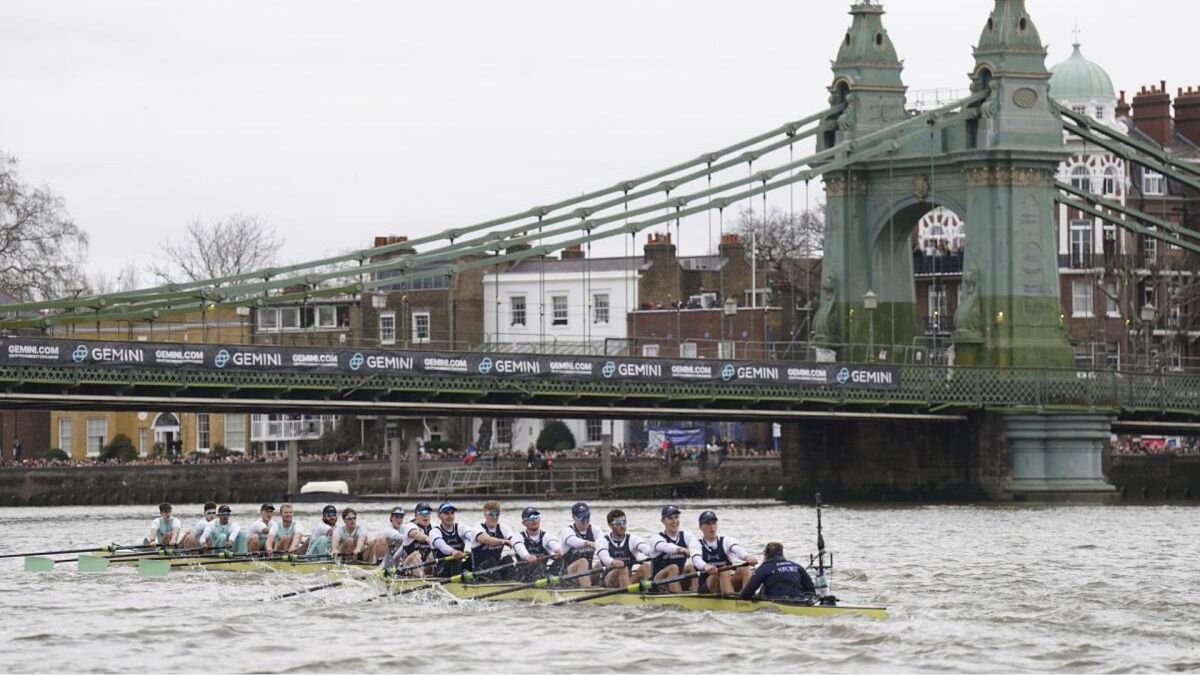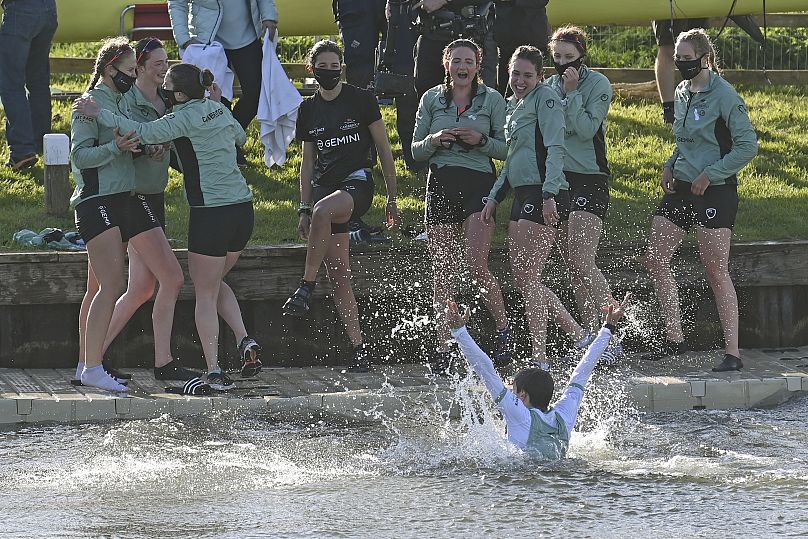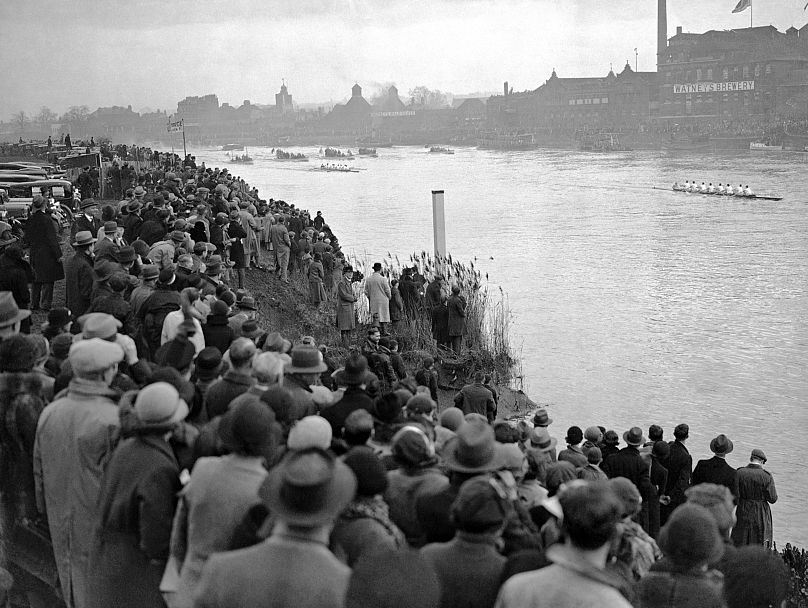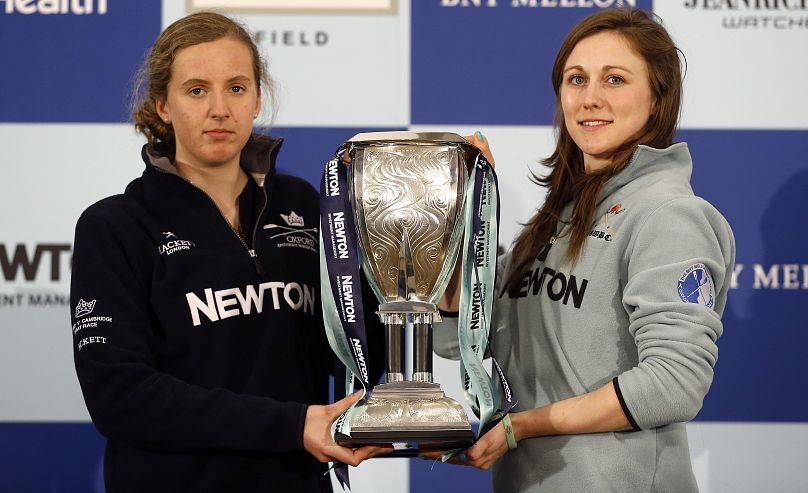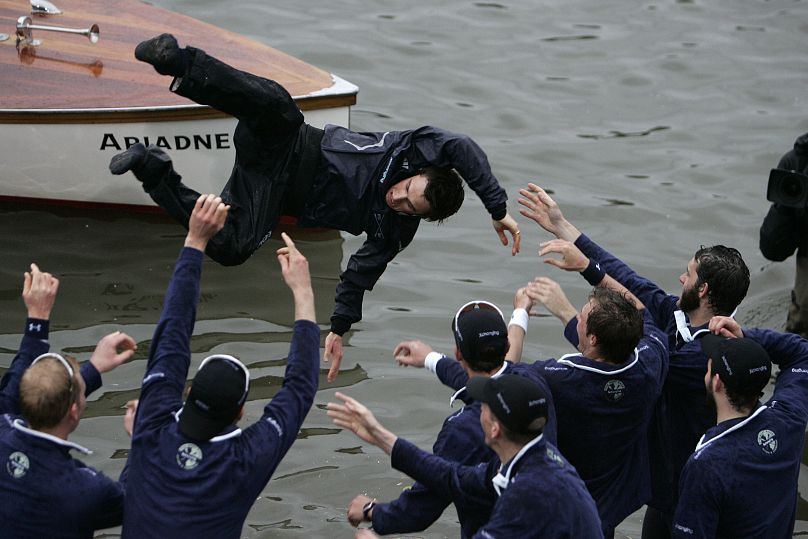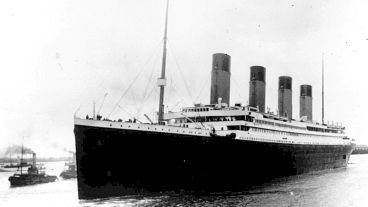This Saturday, the UK's oldest universities will face each other for their annual boat race, despite concerns over sewage in the Thames.
The annual Oxford and Cambridge Boat Race will go ahead this weekend despite concerns about high levels of E Coli in the water.
Earlier this week, the organisers of the Boat Race issued safety guidance for Saturday’s race, warning rowers against entering the water and to cover open wounds. The guidance follows high levels of the E Coli bacteria being found in the part of the River Thames that the race takes place on.
E Coli is a bacteria found in the guts and faeces of animals and can cause bloody diarrhoea for up to two weeks after infection. In some cases, an E Coli infection can even cause death.
The level of E Coli in the water was deemed to be 10 times higher than what the Environmental Agency standards would deem “poor”, their lowest possible rating.
Sewage in the Thames?
The section of the Thames being this unsanitary is just the latest development in a nationwide controversy around the UK’s privatised water companies dumping sewage into the country’s rivers and sea.
Thames Water, the company that has dumped the most sewage, made headlines this week when its CEO Chris Weston said customers would see bills rise by 40% to pay for needed infrastructure improvements.
Between 2020 and 2023, Thames Water dumped 72 billion litres of sewage into the Thames. In 1989, Prime Minister Margaret Thatcher privatised the UK’s water infrastructure. She wiped the debts for the private companies such as Thames Water. Since then, the private water companies have racked up £60 billion in debt – all while paying out £57 billion in dividends to investors.
“It is not just from sewage, it is also from land run-off, it is from highway run-off, it is from animal faeces. All of those things contribute to the problem and I am absolutely determined that, at Thames, we will play our part in cleaning up the problem and so the Thames is a river that people can use as they would like to everyday,” Weston told the BBC.
“It’s a national disgrace, isn’t it?” Oxford coast Sean Bowden said. “It would be terrific if the Boat Race drew attention to it. We are very keen to play a part and we recognize we have a role and a responsibility to it.”
What is the Boat Race?
Despite concerns over infected water, the Boat Race will go ahead.
For those uninformed, what is this latest chapter in the catalogue of quaint traditions that the British presume the rest of the world cares about more than it should? It’s a list that includes Royal Ascot, the “scone” vs “scone” pronunciation debate, and anything to do with the royal family.
The Boat Race is an annual set of rowing races between the boat clubs of the country’s two oldest universities, the University of Cambridge and the University of Oxford.
Due to Britain’s obsession with these two universities – historically attended by only the wealthiest, most privileged youth – what is essentially a student sports team rivalry has been elevated to be considered part of the nation’s sports calendar.
In part, the Boat Race is notable for its sheer duration as a tradition. The first men’s race was held in 1829 when two Harrow boarding school alumni called Charles challenged each other’s respective universities. Oxford won the first ever race.
It wasn’t until 1836 that another boat race took place. It became an annual tradition after 1856 with each year’s loser challenging the winner to a rematch.
Since 1856, the race has only not been held during the war years 1915-1919 and 1940-1945 and in 2020 due to Covid-19.
In 1927, the first women’s boat event was held. Until 1935, the event was not just a race but a competition over speed, steadiness, and style with the two boats in the river at separate times. After 1935, it became an annual tradition with a similar setup as the men’s. The women’s race continued during the war years.
The women’s race officially joined with the men’s race in 2015 when, for the 70th edition, it took place on the same course. Since then, the two races have been rebranded as just “The Boat Races”.
Winners and losers
Although Oxford won the first race, Cambridge has been the historically superior team. In the men’s race, Cambridge has won 86 races to Oxford’s 81 with the 1877 race result a dead heat. The Cambridge women’s team has also notched up 46 wins to Oxford’s 30.
Both of last year’s races were won by Cambridge with the women’s team on a six-race winning streak.
Confusingly, both teams are known as the “blues” and each boat a “blue boat” with Cambridge in light blue and Oxford in dark blue. Each boat contains nine people, including eight rowers facing backwards and a cox who sits forward facing and steers the boat by coordinating the rowers.
The two universities also field reserve teams and hold a veterans race every year alongside the main competition. In total, around 250,000 people will attend at the riverside to watch the races.
One of the big questions this year though revolves around the traditional celebration for the teams. Most years, the cox will either jump or be thrown into the water.
“That is a discussion we will have. The coxes have the right to choose whether they want to be thrown in or not. We will deal with that one in good time,” Bowden said. “People do swim and do a lot of water sports in the river. But throwing the cox in the water for about 10 seconds carries some very small risk, I guess.”
